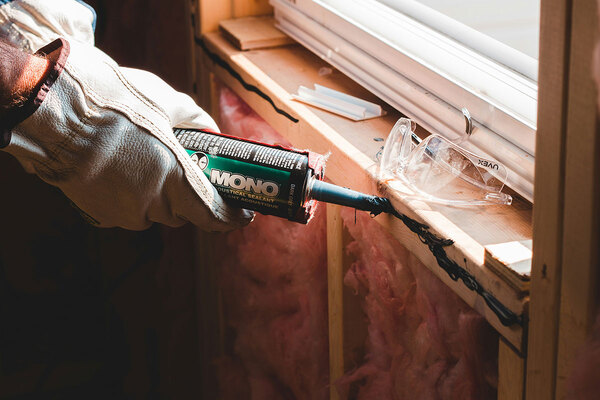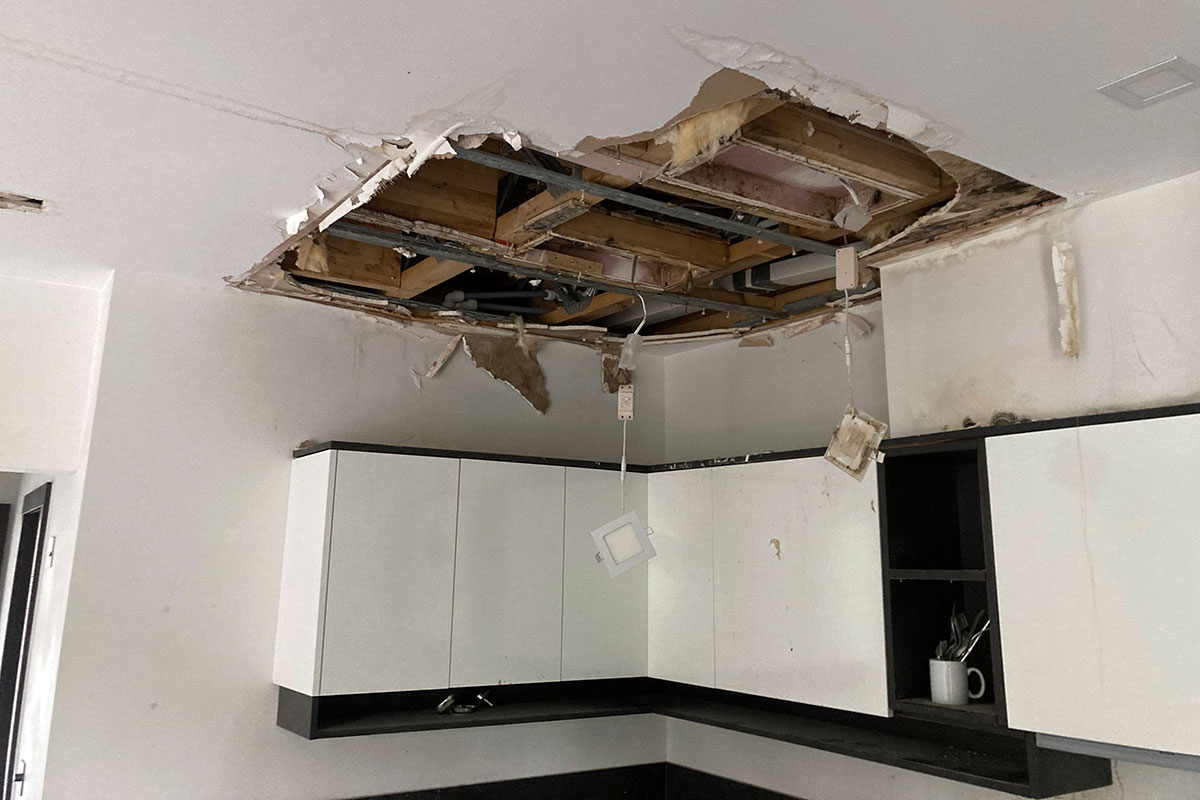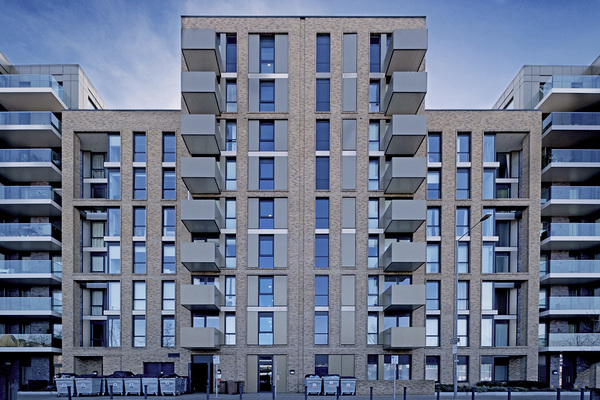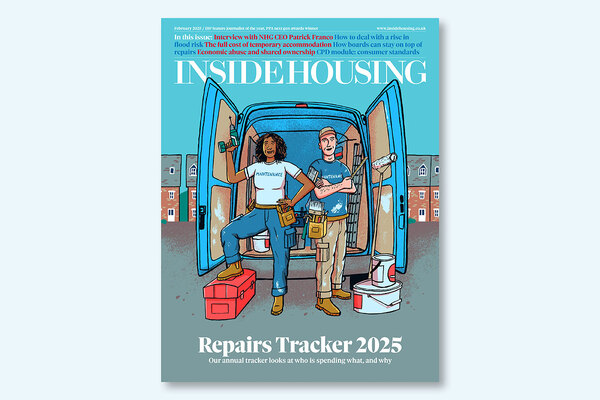Inside Housing Repairs Tracker 2025
Housing providers in England are spending record amounts on repairs and maintenance. Our annual tracker looks at who is spending what, and why. Jenny Messenger reports. Illustration by Tom Jay
At a conference in late January this year, Nadhia Khan, executive director of customer and community at Rochdale Boroughwide Housing (RBH), described the day she was shown into Awaab Ishak’s home, shortly after the two-year-old child died from continued exposure to mould in the property in 2020.
“I remember driving home that day, thinking that when my daughter was two years old, all the noise in our house came from her,” she told delegates at the National Housing Maintenance Forum conference.
But in Awaab’s house, the noise stopped “because we failed to do those repairs”, said Ms Khan, who has worked at RBH since 2019. “That’s the impact of us not dealing with hazards that come to our attention as landlords.”
In response to the tragedy, the government has set out new requirements for landlords under Awaab’s Law, which will come into effect from October. It will introduce specific timescales for responding to damp and mould hazards that present a significant risk to tenants, as well as emergency repairs. A wider range of hazards will be included over the next two years.
This is in addition to the Regulator of Social Housing’s (RSH) consumer standards, brought in following the Social Housing (Regulation) Act in April last year, to make sure landlords respond to complaints and use data on repairs effectively.
The impact of Awaab’s Law
The impact of these regulatory changes is clear. The latest figures from the RSH show spending on repairs and maintenance across 200 registered providers reached £8.8bn in 2023-24 – marking a third consecutive year of record output.
To create our annual Repairs Tracker, Inside Housing has dug into the Global Accounts from the RSH, which brings together the financial reports of all registered providers with more than 1,000 homes.
We explore who has increased their spending the most, who has cut back and where landlords are finding the money to invest in existing stock.
Collectively, landlords spent more than £1bn extra compared to last year’s £7.7bn. This year’s figure is a 63% increase on 2020-21, the period when Awaab died.
The regulator put the rise down to “higher volumes of responsive repairs driven by the management of damp and mould issues, compliance repairs and catch-up works”, alongside fire remediation and building safety work.
Annie Owens, policy leader at the National Housing Federation, explains that many landlords have been focusing on damp and mould since the coroner’s report on Awaab’s death and the Better Social Housing Review, both of which emerged in late 2022.
Ed Farnsworth, group finance director at L&Q, tells Inside Housing the landlord spent £5.8m on damp and mould in 2023-24. L&Q came in at number three for repairs and maintenance spend overall, totalling £325.9m.
Top 50 biggest repairs and maintenance spenders, 2023-24
| Housing association | Total R&M spend, 2023-24 | % change | Major repairs spend | Routine maintenance spend | Planned maintenance spend | Spend per home |
Clarion | £418,000,000 | 5.3% | £22,500,000 | £190,600,000 | £76,200,000 | £3,800 |
Peabody | £371,131,000 | 4.2% | £0 | £103,518,000 | £67,175,000 | £3,907 |
L&Q | £325,917,000 | -6.1% | £0 | £173,181,000 | £40,991,000 | £3,492 |
Southern Housing | £307,300,000 | 50.4% | £40,000,000 | £84,800,000 | £87,600,000 | £4,170 |
Sanctuary | £275,900,000 | 20.4% | £0 | £119,700,000 | £45,300,000 | £2,545 |
Riverside | £241,894,000 | -3.7% | £42,952,000 | £73,969,000 | £38,407,000 | £3,484 |
Notting Hill Genesis | £228,800,000 | 9.7% | £47,100,000 | £109,600,000 | £11,900,000 | £3,965 |
SNG | £215,700,000 | 59.2% | £12,559,000 | £77,553,000 | £48,456,000 | £2,707 |
Places for People | £211,500,000 | 40.5% | £11,100,000 | £84,500,000 | £17,900,000 | £2,001 |
Guinness | £178,800,000 | 0.7% | £10,100,000 | £71,900,000 | £28,600,000 | £2,763 |
Home Group | £149,449,000 | -1.7% | £13,986,000 | £54,814,000 | £30,411,000 | £2,836 |
Together | £139,777,000 | 40.3% | £11,707,000 | £52,428,000 | £0 | £3,619 |
Orbit | £137,890,000 | 36.9% | £0 | £51,367,000 | £24,792,000 | £3,415 |
Bromford | £123,551,000 | 20.4% | £15,679,000 | £40,675,000 | £19,302,000 | £2,736 |
Citizen | £117,381,000 | 43.1% | £8,847,000 | £34,845,000 | £12,249,000 | £3,940 |
Platform | £117,360,000 | 22.2% | £12,788,000 | £55,450,000 | £9,728,000 | £2,464 |
Anchor | £109,508,000 | 6.3% | £0 | £33,208,000 | £30,809,000 | £2,488 |
Torus | £109,480,000 | 24.7% | £20,086,000 | £37,267,000 | £11,956,000 | £2,769 |
Thirteen | £109,245,000 | 23.7% | £14,157,000 | £45,921,000 | £6,729,000 | £3,102 |
Hyde | £109,184,000 | 15.8% | £4,882,000 | £35,944,000 | £21,453,000 | £2,941 |
Aster | £104,281,000 | 25.1% | £22,465,000 | £34,642,000 | £14,400,000 | £2,931 |
LiveWest | £102,524,000 | 14.8% | £25,765,000 | £32,137,000 | £12,205,000 | £2,719 |
Stonewater | £100,793,000 | 24.0% | £9,766,000 | £46,738,000 | £8,803,000 | £2,553 |
Abri | £99,877,000 | 22.4% | £16,780,000 | £40,169,000 | £16,357,000 | £2,406 |
Onward | £99,653,000 | 13.1% | £1,324,000 | £44,590,000 | £21,154,000 | £3,230 |
A2Dominion | £96,714,000 | 12.3% | £15,185,000 | £39,118,000 | £5,160,000 | £3,146 |
Flagship | £93,254,000 | 1.0% | £0 | £35,353,000 | £7,843,000 | £2,794 |
MTVH | £91,112,000 | -2.4% | £1,189,000 | £38,373,000 | £21,295,000 | £1,947 |
Gentoo | £86,982,000 | -0.7% | £8,582,000 | £33,191,000 | £5,997,000 | £3,026 |
Jigsaw | £84,755,000 | 8.8% | £12,739,000 | £40,171,000 | £16,502,000 | £2,361 |
Midland Heart | £84,564,000 | 21.6% | £9,407,000 | £36,531,000 | £8,146,000 | £2,508 |
Vivid | £80,650,000 | 3.3% | £11,726,000 | £32,182,000 | £5,442,000 | £2,432 |
Your Housing | £79,022,000 | 16.7% | £2,185,000 | £24,680,000 | £21,091,000 | £2,900 |
Karbon Homes | £78,835,000 | 15.7% | £0 | £34,960,000 | £14,438,000 | £2,464 |
WDH | £74,885,000 | 9.2% | £21,517,000 | £27,202,000 | £2,806,000 | £2,329 |
GreenSquareAccord | £71,247,000 | 18.6% | £0 | £34,640,000 | £14,466,000 | £2,755 |
Longhurst* | £69,078,000 | 58.6% | £675,000 | £30,779,000 | £9,437,000 | £2,825 |
Housing 21 | £67,650,000 | 13.2% | £2,523,000 | £18,272,000 | £12,934,000 | £3,070 |
WHG | £65,284,000 | 29.1% | £9,604,000 | £13,381,000 | £20,347,000 | £2,990 |
PA Housing | £64,571,000 | 10.5% | £2,856,000 | £27,388,000 | £18,797,000 | £2,842 |
Accent | £64,025,000 | 61.0% | £2,050,000 | £24,026,000 | £11,792,000 | £3,158 |
Incommunities | £55,537,000 | 14.6% | £3,335,000 | £23,190,000 | £5,959,000 | £2,561 |
Believe | £54,697,000 | 5.2% | £3,446,000 | £19,237,000 | £4,769,000 | £3,010 |
Newlon Housing Trust | £53,509,000 | 8.9% | £1,826,000 | £13,542,000 | £11,415,000 | £7,115 |
Yorkshire Housing | £51,492,000 | 13.4% | £3,815,000 | £18,811,000 | £8,943,000 | £2,748 |
Bolton at Home | £51,187,000 | 18.5% | £1,759,000 | £26,406,000 | £4,811,000 | £2,692 |
Moat | £50,736,000 | 60.8% | £6,900,000 | £19,881,000 | £5,177,000 | £2,460 |
Housing Plus | £46,950,000 | 9.6% | £0 | £18,443,000 | £12,628,000 | £2,455 |
EMH Group | £46,894,000 | 25.6% | £487,000 | £20,284,000 | £4,128,000 | £2,283 |
Paradigm Housing | £46,744,000 | 21.3% | £0 | £13,169,000 | £18,237,000 | £2,955 |
Source: Regulator of Social Housing, Global Accounts
Notes: Figures rounded; *Longhurst merged with Grand Union Housing Group in December 2024 and now operates as Amplius
Yet the costs of Awaab’s Law are largely still to come, Mr Farnsworth says. “What we do know is that it is extensive in terms of the future cost pressures it will have on the business and the sector as a whole. I think the pace at which it is implemented is going to have an impact, too.”
L&Q saw a slight decrease – 6.1% – in spending on repairs and maintenance year on year, which Mr Farnsworth says is down to an “isolated situation” whereby part of the budget allocated to fire remediation went unspent. The general trend, however, is upwards, he says.
Yvette Carter, executive director for contract services at Southern Housing, also says the landlord’s spending in 2023-24 doesn’t yet reflect the impact of Awaab’s Law, which will be seen in this financial year and beyond.
Southern was the fourth-biggest spender on repairs and maintenance in 2023-24, with repairs spending rising by 50.4% year on year, largely reflecting its 2022 merger with Optivo. However, the annual increase is considerably lower than the 193% it reported last year due to the merger, after both landlords saw a large increase in the volume of repairs.
Local Space, a 2,700-home housing association based in the South East, saw spending rise 50.3% year on year.
Top 10 percentage increases in repairs spending, 2023-24
| Housing association | Total spending on R&M, 2023-24 | R&M spending % rise on 2022-23 |
| Poplar Harca | £25,527,000 | 101.9% |
| Cobalt Housing | £17,711,000 | 83.9% |
| Sage Rented | £5,117,000 | 83.2% |
| Accent | £64,025,000 | 61.0% |
| Moat | £50,736,000 | 60.8% |
| Joseph Rowntree Housing Trust | £7,302,000 | 60.0% |
| SNG | £215,700,000 | 59.2% |
| Southway | £21,016,000 | 58.7% |
| Longhurst* | £69,078,000 | 58.6% |
| South Lakes Housing | £14,764,000 | 57.1% |
Source: Regulator of Social Housing, Global Accounts.
Notes: Figures rounded; *Longhurst merged with Grand Union Housing Group in December 2024 and now operates as Amplius
Mark Kent, deputy chief executive at Local Space, says the increase was due to a bigger focus on damp and mould by Newham Council, which originally formed Local Space as a vehicle to acquire and refurbish temporary accommodation.
Mr Kent tells Inside Housing the organisation is gradually looking to take control of the 50% of homes it currently leases to Newham. “We think that we can [manage tenancies] best if we’re doing it ourselves, rather than outsourcing it.”
Another key reason for the increased spending has been the RSH’s consumer standards.
Last November, the results of a National Tenant Survey revealed that a landlord’s repairs and maintenance service was the most significant specific driver of overall satisfaction among low-cost rental accommodation tenants.
Tom Paul, director of strategy and change at Southern, agrees. “It’s also the single biggest driver of complaints. It’s also our single biggest area of cost.”
Top 10 percentage decreases in repairs spending, 2023-24
Housing association | Total spending on R&M, 2023-24 | R&M spending % cut on 2022-23 |
Sage Homes* | 13,000 | -99.4% |
Legal & General Affordable Homes | 223,000 | -88.6% |
North London Muslim Housing | 1,106,000 | -61.4% |
St Mungo Community Housing | 5,698,000 | -26.7% |
Tower Hamlets Community Housing | 18,770,000 | -26.3% |
Plymouth Community Homes | 35,109,000 | -9.4% |
Broadland Housing Association | 11,862,000 | -7.8% |
Estuary Housing Association | 10,191,000 | -7.2% |
L&Q | 325,917,000 | -6.1% |
One Vision Housing | 33,942,000 | -6.1% |
Source: Regulator of Social Housing, Global Accounts
Notes: Figures rounded. *Homes were transferred between Sage Homes RP and Sage Housing during the reporting period as Sage Housing was sold and rebranded as Sparrow
Inevitably, the more providers look to understand both residents’ needs and the condition of stock, the more issues they will find.
Many senior figures say they had been proactively tackling repairs, which has increased costs, but the overriding feeling is that this is essential, with or without the law.
“To some extent, we’re providing a vital service, so we don’t have any choice about spending or not,” Mr Paul adds. “If there are repairs to be done, it’s our job to do them.”
But although the hope may be that costs will drop in the long run, the big question is how social landlords are going to maintain this level of investment right now. According to the RSH, repairs and maintenance spending is growing at a faster rate than income from social housing lettings.
Over the next five years, the sector’s business plans show an average spend of £10bn per year on repairs and maintenance.
Empty homes issues
Landlords spent more on fixing damp and mould while homes were unoccupied. This £300m figure remained “elevated” in 2023-24, the RSH said, due to a rise in repair works, building safety and delays in tenant referrals for supported housing.
At Progress Housing Group, the increased specifications for damp and mould resulted in empty home losses of £6.9m – more than 11 times greater than the year before, placing it 12th overall in terms of empty home costs.
“When we go into a void property, we will deal with the root-cause damp issues – we won’t just cover them up and deal with them when they’re tenanted,” says Tammy Bradley, executive director of operations, services and support at the 12,000-home landlord.
At Southern, Yvette Carter adds that empty homes are a growing issue in the sector, in part because of the increasing age of properties.
“They come back in a far worse condition than maybe what we’ve experienced before,” she says.
So where will the money come from? One option over the short term is to move some repairs costs so that they don’t show up as expenses on the balance sheet.
Major repairs, such as replacing cladding, are often capitalised, which means that the cost of the work is added to the value of the property – which depreciates over time – rather than immediately counting as an expense.
Over 2023-24, John Wickenden, research manager at Housemark, says landlords increased not just the amount of capitalised works, but also the scope of works being included, such as empty homes.
While the sector’s operating margin increased slightly from 16.6% to 16.9% following a £400m uptick in surplus from the 7% rent increase, Mr Wickenden puts this down partly to “increased capitalisation”.
A different picture of the sector’s financial health can be seen in the deterioration of one measure that includes major repairs – EBITDA MRI (earnings before interest, tax, depreciation and amortisation, major repairs included) interest cover.
Top 10 highest repairs spend per home, 2023-24
| Housing association | Spend per home |
Tower Hamlets Community Housing | £9,142.72 |
Watmos Community Homes | £7,667.30 |
Newlon Housing Trust | £7,114.61 |
Islington and Shoreditch Housing Association | £6,644.69 |
The Industrial Dwellings Society | £5,259.19 |
Framework | £4,980.14 |
Habinteg | £4,822.59 |
East End Homes | £4,769.14 |
Hexagon | £4,402.30 |
West Kent Housing Association* | £4,305.15 |
Source: Regulator of Social Housing, Global Accounts
Note: *This result covers a 15-month period
In 2023-24, it fell by 15 percentage points to 88% – meaning that, collectively, the sector’s finance costs exceeded what it earned. It is the first time the measure has dropped below 100% since the 2007-08 financial crisis.
Several landlords have persuaded their lenders to strip out major repairs from their loan covenants to improve their interest cover results.
Without the certainty of a 10-year rent settlement, and as borrowing remains expensive, landlords have also cut back on their development programmes or sold off stock to find extra room in their budgets for repairs and maintenance.
The impact on housebuilding is clear: while investment in new homes rose 10% year on year, this was driven partly by higher construction costs, with the number of new homes rising by just 3%.
Top 10 lowest repairs spend per home, 2023-24
| Housing association | Spend per home |
Heylo* | £0 |
Sustain | £0 |
Sage Homes** | £31.25 |
Legal & General Affordable Homes | £73.79 |
Sage Rented | £790.76 |
North London Muslim Housing Association | £1,036.55 |
YMCA St Paul's Group | £1,593.62 |
ForHousing | £1,723.99 |
Orwell Housing Association*** | £1,843.48 |
Great Places**** | £1,852.26 |
Source: Regulator of Social Housing, Global Accounts
Notes: *Heylo’s homes are shared ownership, so leaseholders are responsible for repairs; **Homes were transferred between Sage Homes RP and Sage Housing during the reporting period as Sage Housing was sold and rebranded as Sparrow; ***Orwell’s reporting year is January to December and the landlord has around 650 properties that it either does not own or does not manage, which has impacted this figure; ****Great Places clarified that its spend per home based on owned social housing stock only is £1,972
“The government is not going to meet its housing targets unless it does something very, very different,” says Cath Purdy, chief executive of South Lakes Housing, which saw repairs spending increase by 57.1% year on year.
With cost pressures mounting, many landlords are seeking additional efficiency savings.
While the move to bring repairs services in-house has long been in progress, thanks to the improvements in tenant satisfaction this can bring, now some providers are forensically analysing how productive these teams are.
“We’re starting to see a DLO [direct labour organisation] performing better than those delivering repairs through a contracted-out service,” Mr Wickenden says.
This has been borne out at LiveWest, where the landlord carried out a full review of its in-house repairs systems and processes, and is now seeing more than 100 extra repairs completed per day.
Plymouth Community Homes recently hired an in-house damp and mould team to give it better control over quality and data, while L&Q has combined its empty home and lettings teams to reduce the time between tenancies.
Top 10 major repairs spend, 2023-24
| Housing association | Total spend on major repairs |
Notting Hill Genesis | £47,100,000 |
Riverside | £42,952,000 |
Southern Housing | £40,000,000 |
LiveWest | £25,765,000 |
Clarion | £22,500,000 |
Aster | £22,465,000 |
WDH | £21,517,000 |
Torus | £20,086,000 |
Abri | £16,780,000 |
Bromford | £15,679,000 |
Source: Regulator of Social Housing, Global Accounts
Note: Figures rounded
Yet for some, geography keeps them more reliant on contractors.
Ms Purdy points to a skills shortage in Cumbria, where large contractors generally don’t operate because of the large distances between homes. This, coupled with defence giant BAE Systems in Barrow-in-Furness hoovering up trade operatives as it expands, means South Lakes has struggled to recruit and is forced to rely on contractors.
With so many challenges, what does the future look like for repairs and maintenance?
Current data from Housemark suggests that both repairs volume and satisfaction are improving, Mr Wickenden says. “It’s almost like 2022-23 and 2023-24 were the nadir, and they have started to turn the corner now.”
As yet, the topic remains top priority among chief executives, says Selina White, chief executive at Magna Housing.
“We start every conversation with, ‘And how are your repairs?’ Everyone’s saying the same. Demand is what’s really focusing the mind at the moment, and how we get on top of it.”
Other recent data-driven articles from Inside Housing
Risk Register Survey 2025
Kate Youde examines the financial reports of 100 of the biggest housing associations in the UK, to identify the strategic risks they are most concerned about impacting their operations
Chief Executive Salary Survey 2024
Inside Housing’s annual survey reveals the salaries and other pay of the chief executives of more than 160 of the biggest housing associations in the UK, along with the current gender pay gap at the top of the sector. Jess McCabe reports
The first year of tenant satisfaction measures: the results
The government overhauled consumer regulation following the Grenfell Tower fire. Now, an Inside Housing survey of more than 200 councils and housing associations reveals the first results from the Regulator of Social Housing’s new tenant satisfaction measures regime. Grainne Cuffe investigates
Top 50 Biggest Builders 2024
Which are the 50 housing associations building the most homes? What tenures are they building? And, with warnings already sounded about starts by the G15, what is happening to the pipeline?
The housing crisis among the sector’s staff
An exclusive survey by Inside Housing has revealed that many social housing staff are battling housing insecurity and fearing homelessness themselves. Katharine Swindells digs into the findings
How many toddlers and babies are living in temporary accommodation in the UK?
This live data dashboard uses Freedom of Information requests to track the numbers of under-fives living in temporary accommodation and B&Bs. Katharine Swindells reports
Recent longform articles by Jenny Messenger
Waqar Ahmed: the sector-disruptor who has helped L&Q grow
After more than three decades in housing, the ambitious finance director who drove some of the sector’s biggest mergers is retiring. He tells Jenny Messenger about his long list of financial firsts
Inside Housing visits one of the first landlords to win a C1 rating
Salford-based Salix Homes managed to get a top consumer rating from the English regulator despite facing significant challenges, including 20 high-rise buildings and mounting reports of repairs. Jenny Messenger visits to find out how Salix achieved its C1 grade
What is really happening with Section 106?
As developers raise the alarm about fewer social landlords buying Section 106 properties, Inside Housing’s exclusive data reveals how much affordable housing is delivered this way – and how much is in the pipeline. Jenny Messenger reports
In detail: what the NPPF changes mean for housing delivery
With the redrafted National Planning Policy Framework out for an eight-week consultation, James Riding and Jenny Messenger analyse the implications of a document that seeks to encourage large-scale housebuilding and reverse many of the previous government’s policies
Sign up for our asset management newsletter
Already have an account? Click here to manage your newsletters










